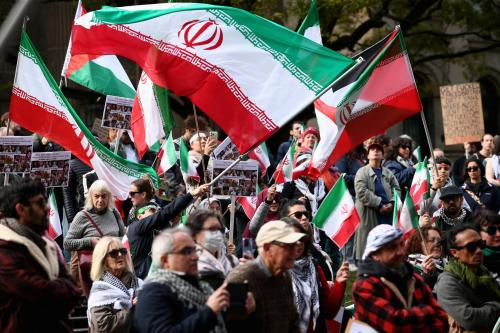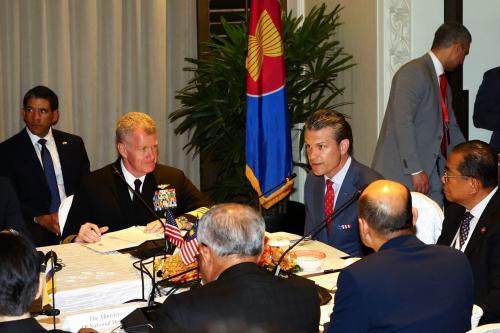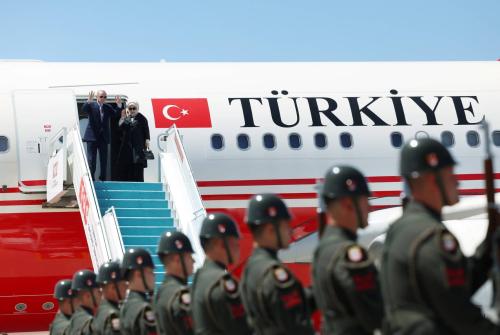Editor’s Note: This article originally appeared under the same title in The Times of India Crest Edition.
Finally. When the Indian government announced its intention to buy French Dassault Rafale fighter jets this month, it rung in the beginning of the end of a process that actually began in the late 1980s. At $10.4 billion — and expected to grow further as price negotiations continue —the MMRCA deal is the biggest contract for a single weapon in the history of independent India. This new fighter is the marquee item in India’s ambitious plan to spend $100 billion over the next five-to-seven years on new conventional weapons. But the Rafale is not a fighter that the world’s air forces are rushing to acquire, so why is India? Indeed, the heavy, twin-engine Rafale is not the kind of aircraft the IAF wanted to replace its ageing MiGs with anyway.
In 2010, with this fighter acquisition process still ongoing, Stephen Cohen and I had argued in a book that India’s military modernisation appeared to be bereft of military-strategic purpose. India’s rearmament effort was led by its armed forces rather than the political leadership of the country, with the consequence that military research and procurement in the country had been never-ending, haphazard, wasteful, and often corrupt.
In the Rafale decision, from identifying the need to picking out the right aircraft, the entire process took more than two decades. During this time, India’s strategic circumstances changed dramatically. In particular, India entered into a nuclear deterrent relationship with Pakistan and sought détente with China. The IAF changed what it wanted in a new fighter, but it is unclear the degree to which military threats from China and Pakistan shaped that decision.
The original justification for a new aircraft was to replace the MiG-21, a relatively lightweight air interceptor. But the replacement criteria the IAF defined—indeed, the very category of fighters for which it held competitive trials—was for a more versatile and more expensive medium (range/weight) multirole combat aircraft, the MMRCA. Requiring the new aircraft to fulfill multiple roles raises the question, which of these required roles are more important? The MMRCA gives the IAF flexibility, but does so by choosing quality over quantity and that may not be the right choice in India’s relatively low-tech security environment.
The larger issue here is that the IAF should not have to answer these questions on its own. The answers must come from how India’s political leadership defines the country’s security, the kind of wars that it wants the military to fight, and the process by which it reconciles the competing interests of India’s military arms.
One consequence of the choice was to effectively reject the indigenous Light Combat Aircraft (LCA), which its developers had hoped would replace the MiG-21. Except the IAF always regarded it as an underperforming machine. But whether or not the IAF should support indigenous aircraft development by backing the LCA, even if it were inferior, is a decision for political leaders to make. Yet Indian politicians rarely speak publicly on military-strategic matters. My understanding is that they rarely provide the military clear guidance in private either.
Left to itself, the IAF’s choice of going from light to medium aircraft reflects the very capable professionalism of airmen who seek to become better and better because that is what a professional does. But professionalism, and its concomitant pursuit of technological advancement, are lesser motivators of good military planning than security threats.
The absence of clear political direction to the military does not answer the puzzle of the choice of the Rafale over its competitors. In choosing a French aircraft India has also passed on an opportunity to provide some quid to the pro quo in its relations with the United States at a time when bilateral ties have lost the headiness of the Nuclear Deal days.
The Obama administration moved away from treating India as an exceptional nation and focused much more on its China portfolio. Obama’s visit to the country in 2010 did not reverse that perception.
But India remains an attractive partner to the world. India’s defence planning dysfunction, its corollary military-strategic restraint makes its national rise more palatable to the international community than, say, China’s. Today, even the Russians hesitate to sell advanced weapons to China, but suppliers from around the world line up at South Block. They benefit of course, but equally noteworthy is the fact that their governments are not afraid that India will turn these new guns back at them.
There is irony in the fact that India’s broken defence planning contributes to the nation’s rise in a back-handed fashion. To many Indians this is not a trade-off worth making, but it is not one that should be dismissed out of hand.
The Rafale decision has signaled to Washington that India has other options — if the Obama administration wants a stronger military relationship with India, then it should be more forthcoming with high technology transfers. The loss of the deal has rankled American industry and government sufficiently to warrant a reconsideration of the U.S. technology regime as it applies to India. If India continues to buy more advanced conventional weapons, and if American firms continue to get a fair shot, technology transfers are likely to become easier. The Rafale may have ambiguous military value, but politically it maybe prove to be the force multiplier that the IAF is hoping it will be.
Copyright: Bennett, Coleman & Co. Ltd, India
The Brookings Institution is committed to quality, independence, and impact.
We are supported by a diverse array of funders. In line with our values and policies, each Brookings publication represents the sole views of its author(s).



Commentary
Op-edOn a Wing and a Player
February 18, 2012